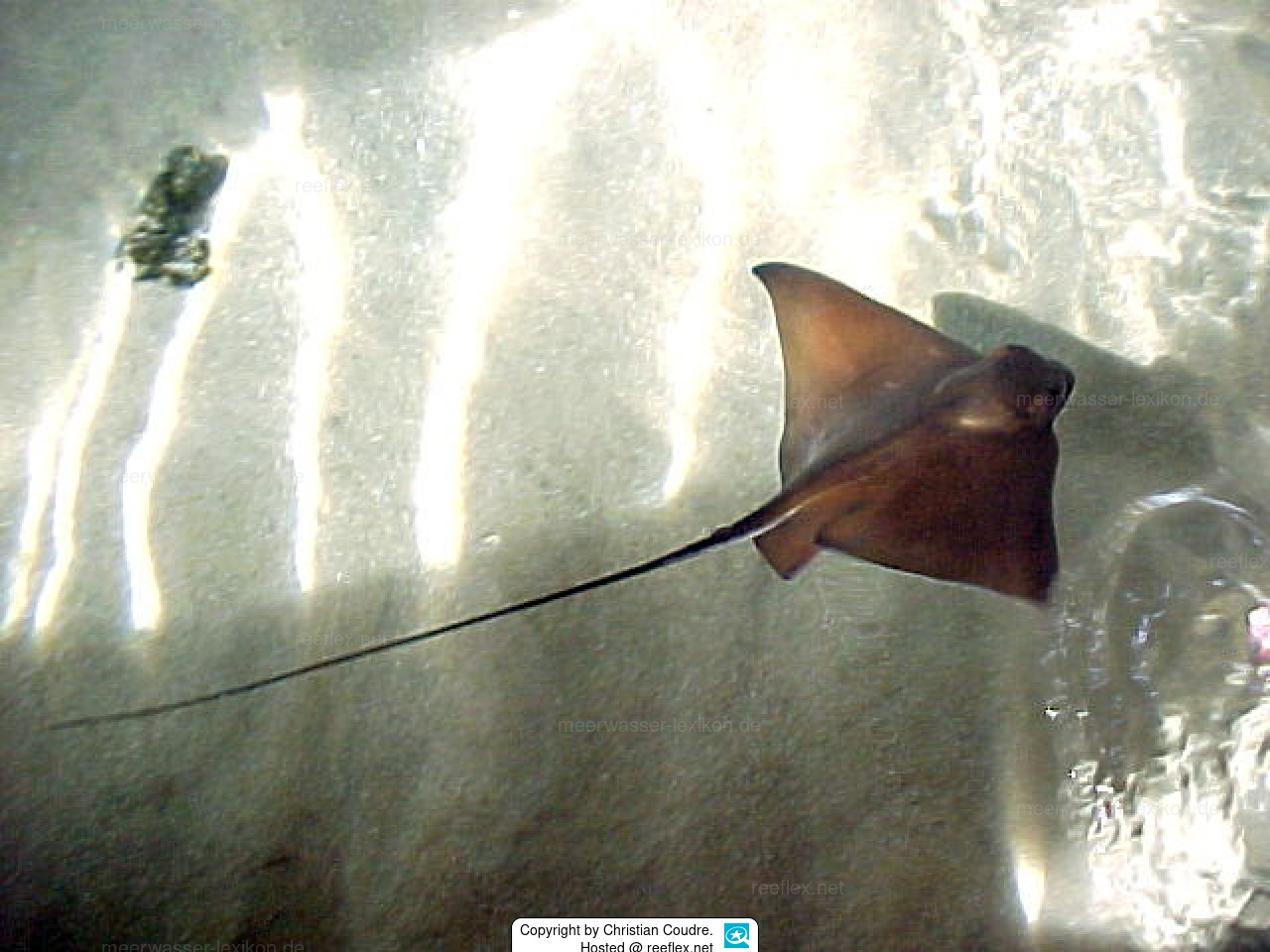Info
Distribution:
Eastern Atlantic: Madeira, Morocco and the Canary Islands north to the western coasts of Ireland and British Isles and the southwestern North Sea, south to Natal, South Africa.
Also throughout the Mediterranean.
Biology:
Found in shallow lagoons, bays and estuaries; also offshore down to at least 95 m.
Often found in groups.
Feeds on benthic crustaceans, mollusks and fish.
Ovoviviparous (Ref. 50449).
Gestation period of 6-8 months, the females give birth to 3-7 young.
Caught by shore and ski-boat anglers, usually released after capture.
Flesh is highly esteemed.
Sportfish:
Synonymised taxa:
Leiobatus aquila (Linnaeus, 1758)
Myliobatis cervus Smith, 1935
Myliobatis equila (Linnaeus, 1758) (misspelling)
Myliobatis noctula Bonaparte, 1833
Myliobatus aquila (Linnaeus, 1758) (misspelling)
Raia rhombus Larrañaga, 1923
Raja aquila Linnaeus, 1758 We







 Christian Coudre, Frankreich
Christian Coudre, Frankreich






